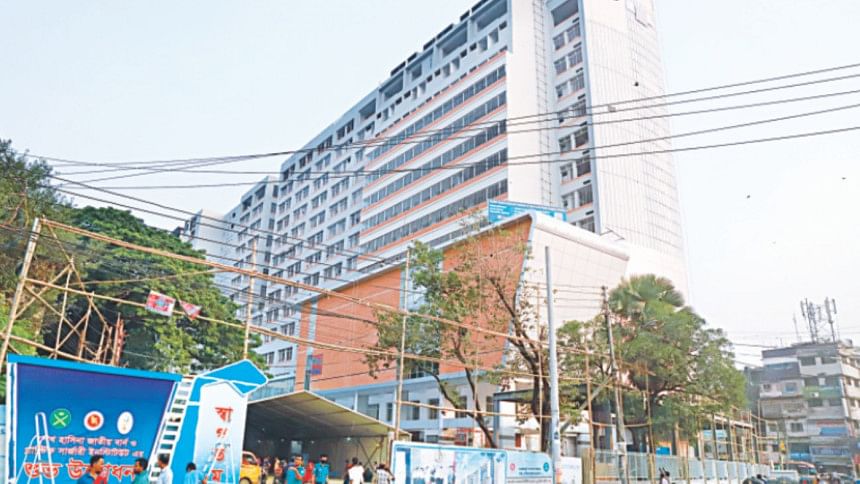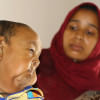Pinning high hopes on new burn institute

Writhing in pain on the floor of the female ward of Dhaka Medical College Hospital's burn unit, Anjuara Begum still kept looking beside her to check on her son who was sedated and placed next to her.
On October 13, six members of her family had died in a fire at a rented flat in the capital's Uttar Khan. Anjuara, a 30-year-old garment worker, and her school-going son Abdullah Shourabh survived with six percent and 12 percent burns on their bodies. Doctors, however, considered their conditions to be critical.
Overcrowded with patients five times beyond its capacity, the 100-bed burn unit struggles to provide the patients with the services required, while patients like Anjuara and her son remain at the risk of getting infections.
However, with the establishing of a new 15-storey burn and plastic surgery institute on Dr Mohammad Shahidullah Sarak at Chankharpool area of the capital, right across the street from DMCH burn unit, comes the hope for improvement of a situation so dire.
This new public institute, named Sheikh Hasina National Institute of Burn and Plastic Surgery, will be inaugurated tomorrow by the Prime Minister and is expected to be operational within six months.
WHAT IS AND WHAT CAN BE
According to three consecutive years worth of data since 2014 of the existing burn unit, the yearly death toll stood at around 12 percent of admitted patients. More lives could be saved if only the spread of infections on burn patients can be prevented, according to DMCH sources.
Acknowledging infection as the cause of death for many burn patients, Samanta Lal Sen, national coordinator of burn Sheikh Hasina National Institute of Burn and Plastic Surgery, said unrestricted movement of visitors inside the hospital was one of the reasons. Patients having to use the floor space during treatment, like Anjuara and Abdullah, also involuntarily contribute to the spread of infections.
Among other factors, the hospital has only eight regular fourth-class staff members against the requirement of at least 300 to cater to patients admitted. Sixty-eight irregular “staff members” have been providing services in exchange for tips from patients' families.
This gap between the number of patients and hospital workers is filled by the patients' attendants. And so, the authorities' hands remain tied in regard to limiting visitors' movement.
Sen said the issue of overcrowding would be solved when the new burn institute and the existing DMCH burn unit would operate simultaneously.
Apart from the vast infrastructure of 6.5 lakh square feet and modern equipment, Sheikh Hasina National Institute of Burn and Plastic Surgery institute will provide services that have not even been thought of until now, like supplying skin from a skin bank, which, Sen said, would solve the present problem of shortage of skin when skin grafts are required. It would also have 10 modular operating theatres to contain infections.
“We will be able to reattach severed limbs if a patient is rushed to the institute within six hours after an incident,” Sen said, adding that a helipad was there to fly in emergency patients.
More concerns regarding the DMCH burn unit arose when an oxygen leak at an operation theatre, on Sunday, compelled the authorities to stop operations for a day because the hospital didn't have a technician to fix the problem, a hospital source said.
The unit lacked manpower, especially fourth-class support staff, since its inception in December 2003, and has been depending mostly on irregular “staff members” who learnt everything “on the job”, including complicated procedure like dressing.
“The new building and equipment, costing Tk 912 crore according to the design, will not bring significant changes for burn patients unless we get skilled manpower,” Partha Sankar Paul, resident surgeon of the DMCH burn unit.
However, an estimate of 2,100 staffers, including doctors, nurses, technicians, ward boys and administration staff members, have been allocated to the new institute's authority.

 For all latest news, follow The Daily Star's Google News channel.
For all latest news, follow The Daily Star's Google News channel. 








Comments